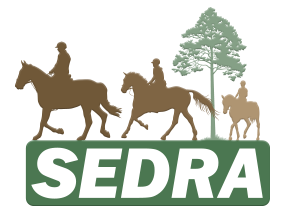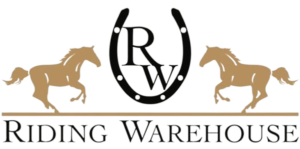As with a human athlete, the success of a fitness and conditioning program for your horse is based on the horse’s body’s adaptive response to the stress of exercise.
To achieve a conditioning and training effect, the horse must be subjected to gradual increases in workload with each new level of training being maintained until the body adapts to the additional stress.
The advantage of a heart rate monitor is that it gives a continuous reading of the horse’s heart rate before, during and after exercise.
After the horse’s body adapts to each new level of training, the workload is incrementally increased, again with a period of adaptation which is then followed by more intense training.
These alternate periods of increasing the workload and then allowing a period of adaptation is known as progressive loading. As the levels of exercise increase, the horse is gradually stressed to the point that it is able to tolerate the same exercise the next time with less stress.
Both aerobic (occurring in the presence of oxygen) conditioning and anaerobic (occurring in the absence of oxygen) conditioning are involved in progressive loading.
For aerobic conditioning, progressive loading is accomplished through gradual increases in the duration and speed of the exercise on a weekly basis.
For anaerobic conditioning, progressive loading is accomplished by a weekly increase in the exercise speed or in the number of repetitions of high intensity activity.
Event specificity – How do you use your horse?
Training the horse to use the specific muscles and systems involved in the sport in which the horse competes, while considering the individual horse’s fitness level, are two additional principles of conditioning to consider as you work with your horse.
Just as a long distance runner’s training will differ from the training of a pole vaulter, so will the training of your horse focus on the specific demands of a particular type of event for which the horse is training.
The specific muscles and systems involved in the discipline will be the focus of training.
The physiological and psychological demands of competitive events such as a 3-day event, barrel racing, polo, reining, and endurance racing differ greatly. Training of your horse should be specific to the athletic event in which it will be participating, although this principle need not be followed too rigidly.
For example, if your horse is to be involved in sprinting sports, most of its training will focus on being able to accelerate quickly, then decelerate and possibly do intricate maneuvers. You may find that a good alternative exercise is working the horse over hilly terrain which has the advantage of increasing heart rate without increasing speed. This exercise does not put the excessive stress on bones, tendons and ligaments that sprinting does, but does effectively promote cardiovascular conditioning which will pay off in the actual sport.
Individual differences
Pro athelete or couch potato?
Genetics, age, sex, training – all impact an individual horse’s ability to perform.
Awareness of the individual differences in horses and the fact that their individual responses to conditioning will differ is another important principle of conditioning.
Although genetic factors play a major role in the variation in training response, the state of fitness at the beginning of a training program is extremely important.
Age and prior activity level are important since some older horses have a reduced capacity to exercise, while younger horses are often capable of greater adaptations in response to training.
A horse that has been inactive for 12 months or more is not going to reach a certain level of fitness as quickly as a horse that has had a six or eight week layoff after a season of training and competition.
To push an older horse or a horse that has been inactive for a long time into a full-scale training program without allowing for individual differences is to invite not only injury, but also mental and emotional resistance to the program.
Reaching and maintaining a desired fitness level for the horse
The initial stage of conditioning begins with a period of low intensity exercise known as long slow distance training. The horse walks, trots and canters either in the arena or on the trail. The objective of training is to prepare the horse to cope with 45 to 60 minutes of easy exercise.
This conditioning improves cardiovascular and muscular efficiency and enhances the horse’s ability to regulate body temperature while stimulating adaptive changes in the limbs. LSD training builds aerobic endurance and allows the horse to exercise for prolonged periods at a low to moderate intensity.
This phase of training may take from 2 to 12 months depending on the breed, age, previous conditioning history and the competitive objectives. For a young horse being conditioned for the first time, the process will take longer because of the need for intervening rest days to allow a full adaptation to take place.
For a horse that was in good condition previously, but has not been ridden for a few months, the process will be much shorter.
The appropriate frequency of exercise training will depend the objectives of the training.
When the objective is cardiovascular fitness, workouts performed 3 times a week on alternate days will allow time for tissue repair between workouts.
One important fact that you should be aware of is that too frequent bouts of exercise are not likely to produce a faster conditioning response, and, may, in fact, predispose the horse to injury. When the horse is actively competing, the competition may serve as the workout.
Remember that too little stress on tissues will not produce beneficial results, but too much stress or insufficient recovery time between exercise bouts will lead to a state of overtraining.
Mild to severe muscle strains may occur and the supporting structures of limbs, bone, cartilage, ligaments and tendons that adapt more slowly to the stimulus of exercise may be compromised with strains or fractures occurring as a result of the overtraining.
Nutrient requirements during equine fitness training
Supplements required?
The lack of variability in the feed of a hay fed horse may require supplementation of vitamins, minerals and protein.
As your horse’s fitness training load increases, adjustments need to be made in the feed ration to accommodate increasing physical demands.
This is usually accomplished by increasing the grain and decreasing the amount of hay fed. An alternative method of increasing the energy intake is to add fat which is an energy dense food.
In addition to increasing energy consumption, it may be necessary to add calcium carbonate to the ration as the grain to hay ratio increases.
If your horse begins losing weight during fitness training, it is obvious that the energy content is insufficient for the workload and the amount of feed needs to be increased.
If your horse is competing, the feeding regime on that day of the competition can have an enormous effect on the horse’s performance. Research indicates that a meal of hay and grain fed approximately 4 hours before the beginning of competition will allow time for stabilization of the glucose and insulin levels before competing.
In addition, electrolytes should be given at the same time as the meal since this combination influences the amount of fluid retention in the gut.
The fibrous content of the hay and grain stimulates the horse to drink, and and the electrolytes keep the water in the intestine where it is available to replace fluids lost in sweat.
Monitoring horse fitness
How do you know when your horse is “fit?” Researchers with lab equipment have all kinds of ways to measure a horse’s fitness, but unfortunately, most of us do not have a lab full of equipment to determine when fitness is reached and then monitor it on an on-going basis.
As simple as it may seem, the information that can be gained by monitoring your horse’s heart rate is perhaps the best and most practical means of judging work effort.
Monitoring the heart rate during exercise and recovery after exercise will give you a clear indication of your horse’s fitness. Together, these two heart rates are a means to quantify work effort and, over a period of time, show the progress the horse is making toward fitness.
Strenuous workouts or faster running speeds will produce higher heart rates as fitness training takes place, especially in the early days of training. As the horse becomes more fit, the heart rate decreases during exercise, and it also goes down more quickly following exercise.
By keeping records of the heart rates, both during exercise and during recovery, over a period of time, you will be able to compare the changing heart rates as your horse becomes more fit.
You can determine the heart rate by palpitating an arterial pulse, listening to the heart sounds with a stethoscope or by using a heart rate monitor. Since the heart rate drops rapidly after exercise ends, palpation or auscultation of the heart rate by using a stethoscope will not accurately reflect the heart rate during exercise.
The advantage of a heart rate monitor is that it gives a continuous reading of the horse’s heart rate before, during and after exercise. If you do not care to invest in a heart monitor, you can still assess your horse’s heart rate before and after exercise.
In any case, when you are comparing heart rates to determine fitness, you will need to standardize your workout program to make sure the heart rate comparisons are valid. Do this by making sure the horse’s work covers the same distance, terrain, footing, environmental conditions, etc. each time you do your comparisons.
The measurement of recovery heart rate is considered the best option for assessing the horse’s capacity to adapt to the training load. Take the horse’s heart rate at 2, 5 and 10 minutes after completion of your standardized exercise program.
In a well-conditioned horse, the heart rate will be around 60 beats per minute after 10 minutes of recovery even following strenuous workouts.
If the heart rate is 72 to 80 beats per minute or more, it may indicate that the work effort is beyond the horse’s current level of fitness.
Heart rate is sensitive to a variety of environmental factors including temperature, work surface, excitement level. Exercise heart rates increase during hot weather, or on more yielding surfaces, and also show slower recovery rates.
Illness and lameness can also affect the horse’s heart rate, so if the heart rate is elevated above normal after the bout of standardized exercise, the horse should be evaluated further.
At one time, the respiratory rate was considered to be an indicator of fitness, but research shows that, although the respiratory system plays an important role in thermo regulation during and following exercise, it is more reflective of heat buildup and dissipation than adaptation to training.
Detraining
Avoid detraining your horse.
Maintaining a fitness level is easier than building to a level. Don’t let your equine become detrained in the off season.
Another principle of conditioning is that when a horse is taken out of training, it loses fitness. This loss of fitness is known as detraining, and the rate at which cardiovascular fitness, musculoskeletal strength and suppleness are lost determines the time required to recondition the horse once it is back on the fitness conditioning program.
Minimal loss of fitness occurs when a horse is out of training for a month or less, especially if it has been training for several months prior. In such cases, the workload should be reintroduced gradually over a period of several days before resuming the previous work schedule, especially if an injury is involved.
If the layoff is longer than a month, greater losses of cardiovascular condition and musculoskeletal strength will occur. As a rule of thumb, each additional month off beyond the first month of layoff requires a month’s reconditioning.
It is best to maintain a baseline level of fitness at all times including at the end of the competitive season with cardiovascular workouts twice a week at a reduced intensity and duration. By maintaining a baseline level of fitness, reconditioning will proceed much more rapidly the following season.
Summary of conditioning principles
- An adequate level of fitness is necessary for horses to reach their potential
- Progressive loading with a period of exercise followed by a period of adaptation works well in conditioning for fitness
- Performance is most effectively improved by training the specific muscles and systems involved in the horse’s discipline
- It is important to remember that different tissues in the body vary in their rate of adaptation to exercise with the cardiovascular and muscular systems respond rapidly
- The supporting structures including bones, ligaments, tendons adapt more slowly over a period of months
- Each horse is an individual and progress will vary
- The changes in nutrient requirements should be carefully monitored and increases in energy dense feed made when necessary to maintain horse in peak condition
- Training programs should allow adequate time to condition all the body systems
- A baseline of fitness should be maintained during off-seasons and other times of layoff unless the horse is injured or so ill that exercise would be counter-productive
Consider this
When a horse is injured or ill, it is recommended that they continue some work if at all possible taking into account the injury or illness. Big changes in fitness can be detrimental to long-term soundness, especially in older horses which usually take longer to re-establish fitness levels after layoffs
About the author
EquiMed Staff shares a common goal of helping you improve your horse’s health. The staff work together to develop unique web-focused content that answers the most common questions of horse owners. EquiMed staff written content is updated frequently to incorporate the best practices within the equine healthcare industry. Thanks for visiting! Visit EquiMed’s Google+ page.
Submitted by EquiMed Staff on














